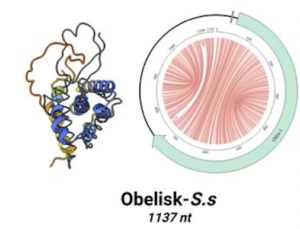NEW YORK—”What works to control ADHD?” It’s a question a lot of parents are asking doctors these days. Your answer, says Dr. Stephen Cowan, should be: “Which kid?”
Dr. Cowan, a holistic pediatrician in Croton-on-Hudson, NY, applies the principles of traditional Chinese medicine (TCM) and its “Five Elements” concept in working with children who have attention and behavior problems. Speaking at the 3rd annual Complementary & Alternative Medicine Expo East, he explained that attention problems are a symptom, not a disease.
“A lot of different things can result in attention problems, including fetal alcohol syndrome, lead toxicity, hearing loss, sleep disruption, anxiety, chronic stress, learning disabilities, dietary and digestive problems. It is like fever: it can reflect many different causes, but it is not a disease in and of itself.”
Different types of kids with equally diverse behaviors can end up with an ADHD diagnosis. The TCM Five Elements typology can help sort out what’s actually going on for a given child. But to get this perspective, you have to go against our culture’s near obsession with norms and averages and our predilection for quick pharmaceutical fixes. Dr. Cowan strongly believes the mainstream pharmaceutical approach is doing these kids more harm than good.
Readin’, Writin’ and Ritalin
Kids with ADHD reflect the social forces around them. “Our entire society has ADHD. It is characterized by impatience, impulsivity, and unwillingness to pay attention, especially to children. Adults are working more and longer. The workloads are up, and so are the distractions. Stress and irritability are all increasing. As parents’ impatience with their own children grows, we as doctors are more apt to treat these kids with drugs.”
The result? A nation in which 10% of all school-aged boys are called “ADHD” and put on drugs. “This is roughly the same number as people with cardiovascular disease.”
By 2004, nearly 10 million US kids were labeled ADHD. McNeil, the company that makes Concerta, one of several stimulants used for ADHD kids, reaped $800 million last year on that drug alone. It doesn’t hurt that the company—with the blessing of the American Academy of Pediatrics—prints and distributes the ADHD evaluation checklist teachers use to assess kids.
The ADHD crowd is getting younger, too. ADHD among preschoolers (age 5 and under) has increased 368% over the last few years. “Preschoolers are supposed to have ADHD!” Dr. Cowan joked. The problem, however, is a very serious one.
All ADHD drugs are “speed.” They will increase “focus” and the appearance of attentiveness, but there’s no evidence they improve learning. “You will focus more, but there’s no evidence of increased retention.” Until recently, there was no safety data for any of these drugs beyond one week. The longest safety study is still only one year. We simply don’t know the impact of continuous exposure.
Unless we want a nation of speed-addled, very disconnected kids, we need to look at the issue differently.
Digital Multitasking
“I’m not denying that kids are having attention problems, but we’re taking the kids and their problems out of context, and we’re homogenizing our treatment, which I think is dangerous. The reality is, there is no ‘average’ kid. This sort of thinking, the homogenization and depersonalization that characterizes conventional medicine, is a very dangerous philosophy in this context.”
Many factors influence attention, cognitive ability, and behavior in children, including, of course, genetic predispositions, socioeconomics, and family dynamics. One can’t underestimate the impact of technology. “Our kids are digital-multitasking all the time. They live in a highly stimulating environment … it is common to see a kid with a computer on, a TV on, talking on a cell phone, and doing his homework all at the same time.”
School has become increasingly stressful. Educators are ever more focused on rigid standardized tests, and kids must master more material in less time, in an environment that has exponentially more distractions than their parents had. “I saw three kids with gastric ulcers within recent years,” Dr. Cowan said.
Understanding the Five Elemental Types
Children respond differently to these pressures, and this is where the TCM concepts can come in handy.
The Five Elements idea is an ancient one, based on the notion that all natural processes and phenomena can be classified as belonging to or manifesting one of five basic “elements:” Wood, Fire, Earth, Metal, or Water. The theory holds that every human, in his or her essence, belongs to one of these five “types” which colors how one asserts oneself in the world, what one finds attractive or repelling, how one copes with stresses, and how one seeks comfort.
Dr. Cowan, who studied TCM with Efrem Korngold, co-author of the modern TCM classic, Between Heaven and Earth, has spent the better part of 20 years verifying the Five Elements typology. He has amassed a vast video library of thousands of kids across the developmental spectrum, and he believes the elemental tendencies begin to show themselves within the first year or two of life.
Wood types are very physical. They’re the leaders. They’re competitive and want to be first. They always want to win, to be in front. They’re pioneers who see a path and want to take it. Natural leaders, they can usually win the enthusiasm of peers. Since they live primarily in the physical world, they often act out physically when stressed, becoming aggressive, argumentative, “in your face.” Under duress, they become the restless and assertive “Wild Child.”
Fire types are jovial pleasure-seekers. They like to relax, socialize and have fun. They often seek thrills and excitement, and love to entertain others. They’re fascinated by sensory stimuli and often get carried away by the “carnival” of light, sound and image that the world presents. They often dislike school because it is not fun; the dislike grows as they get older and the workload intensifies. They try to make things more amusing by becoming the “class clown.”
Earth types are all about the social world. They view their worth in terms of interpersonal relationships, and constantly seek social contact. They want to fit in, and often play the role of peacemaker. These are the constant-talkers who get in trouble because they can’t contain the need to connect with others. Quiet study periods are torture to them. Social matters are foremost in their minds, and they fret incessantly about who’s talking to whom, who’s mad at whom, and who will sit with them at lunch. This all seems far more important than their lessons.
Metal types are highly sensitive and detail-oriented. They see things few others do, and have an innate sense of order, beauty and perfection. They seek control and like to see their visions met. They value precision; where a Wood or Fire type might gloss over details, a Metal type digs right in. The downside is rigidity and inflexibility. They get stuck in their own vision of right or wrong, leaving no room for others. They have difficulty letting go of small details, get anxious when something’s not done “right,” and become negative when they feel out of control.
Water types think and feel very deeply. They live in the realm of ideas and imagination, and have only a modicum of interest in the physical, practical world. They’re natural wisdom-seekers, and have a rather advanced interior world for their age. They often seem to be “off somewhere.” They’re not particularly concerned with punctuality, and respond to time-pressures and other external demands by disconnecting, staring out the window, or retreating to their inner world. Unlike Wood types who become confrontational, or Fire types who seek thrills, Water kids become withdrawn in chronic stress situations.
All people manifest all of the elements to some degree, but if you observe yourself and others carefully, you’ll see that a certain element tends to predominate. In a healthy adult or child, the elements are in balance, so that even though one tendency is most prominent, it is well-tempered by the others.
Five Types, Five Drug Responses
Under constant stress, however, an individual typically defaults to the predominant element, and his whole being becomes unbalanced. Thus, the energetic outgoing kid becomes oppositional and aggressive. The wonderfully imaginative kid becomes remote. Dr. Cowan pointed out that the core tendencies of any of the five types, taken to the extreme, look like symptoms of “ADHD.”
Just as the manifestations are different, so will be the response to drug therapy. “Ritalin will work okay with the Wood kids, because they like speed. They like fast motion of any kind, be it action sports, emergency situations, or conflicts. So, giving these kids a stimulant feeds their imbalance, and since they basically like the effect, it can be extremely difficult to get the Wood kids off the drugs.”
Fire kids, on the other hand, will do whatever they can to avoid taking the drugs. Why? Because a stimulant narrows their focus, and this stops the Technicolor wonderwheel. The “focus” that parents and teachers prize seems to drain all the fun out of living.
Earth kids on stimulants often develop physical symptoms, especially stomach aches. The improved focus induced by the stimulant tends to be applied not to schoolwork, but to the social dramas that hold pride of place in their minds.
Give stimulants to a Metal kid and you create a detail monster. “They become super-hyper-focused, and where once they lost the forest for the trees, now they’re losing the trees for the bark,” explained Dr. Cowan.
Water kids on stimulants tend to become even more remote. They may look “more attentive,” but inside they may be experiencing profound disconnection that can easily morph into suicidality. These kids already feel tenuously connected to the physical world; stimulants amplify this, and can easily lead to a feeling that “this world is just not for them.”
Balancing the Elements
The core of Dr. Cowan’s therapeutic approach is to teach the child and his or her parents how to both nurture the core elemental tendencies while simultaneously balancing them, so they become assets rather than hindrances. He does this through a combination of diet and nutritional recommendations, acupuncture, guided imagery and other mind-body techniques.
This approach is, by definition, highly individualized, in marked contrast to pharmacotherapy. But there are a number of basic “interventions” that help all kids, regardless of their type. “Breathing, eating and moving are the three keys.”
He usually starts by teaching kids how to pay attention to their breath, a very simple form of meditation and stress reduction. This naturally increases the child’s ability to focus and pay attention. It is easy even for very little kids, and it has the added benefit of relaxation. Once a kid gets into a regular routine of practicing breath-attention, you can expand it to include their whole bodies. “I teach the kids to become aware of subtle changes in their bodies.” This works best when coupled with simple stretching and flexibility exercises.
What we eat and how we eat is a major influence on cognitive ability. A steady diet of processed foods gulped down in front of the TV is a recipe for attention problems, let alone obesity and diabetes. High-sugar, high-fat fast foods send an alarm message to the body, stimulating fight-or-flight cortisol responses. This is harmful, especially in kids who are already wound up. (For more on nutrition, ADHD & Autism, visit www.holisticprimarycare.net and search “ADHD”.)
“Eating together as a family is very important,” Dr. Cowan added. “If you eat in front of the TV, you’ll end up eating what they tell you to eat.” A little mindfulness about food preparation and a valuation of taking meals together can make a big difference. “Remember that the gut is a brain. Eating is the first way we know the world. Digestion is a form of learning—it is a way we get to know our environment.”
Exercise is equally important, but the different types have affinities for different forms of exercise. The Wood kids usually like to be outside and they enjoy exertive physical activities, which should be encouraged. But make sure they keep themselves well-hydrated. Dr. Cowan described one case in which he gave a Wood type boy his own special “Runner’s Bottle.” The kid and the bottle quickly became inseparable and rehydration was seldom a problem after that. Wood types need a lot of protein, especially in the morning, and they benefit greatly from omega-3 fatty acids. “The Wood type is basically a hunter type. They tend to need meat,” Dr. Cowan said.
In contrast, Water kids don’t usually gravitate toward action sports or other exertive activities. For them, a more meditative form of exercise like yoga, Tai Chi or even just regular walks makes more sense. The challenge is to get them engaged in the physical world, since they tend to be dreamers and intellectuals. Diet-wise, these kids may not need quite as much animal protein as the Wood types.
These are just a couple of examples. There are many different practical aspects to working with the five types. The key is to identify the core elemental tendencies, and give them constructive creative outlets, while simultaneously nurturing and strengthening sides of the child’s being that may not be as strong by nature. “You try to work with their environments, their diets, and their minds, and give them an outlet for who they really are.”







